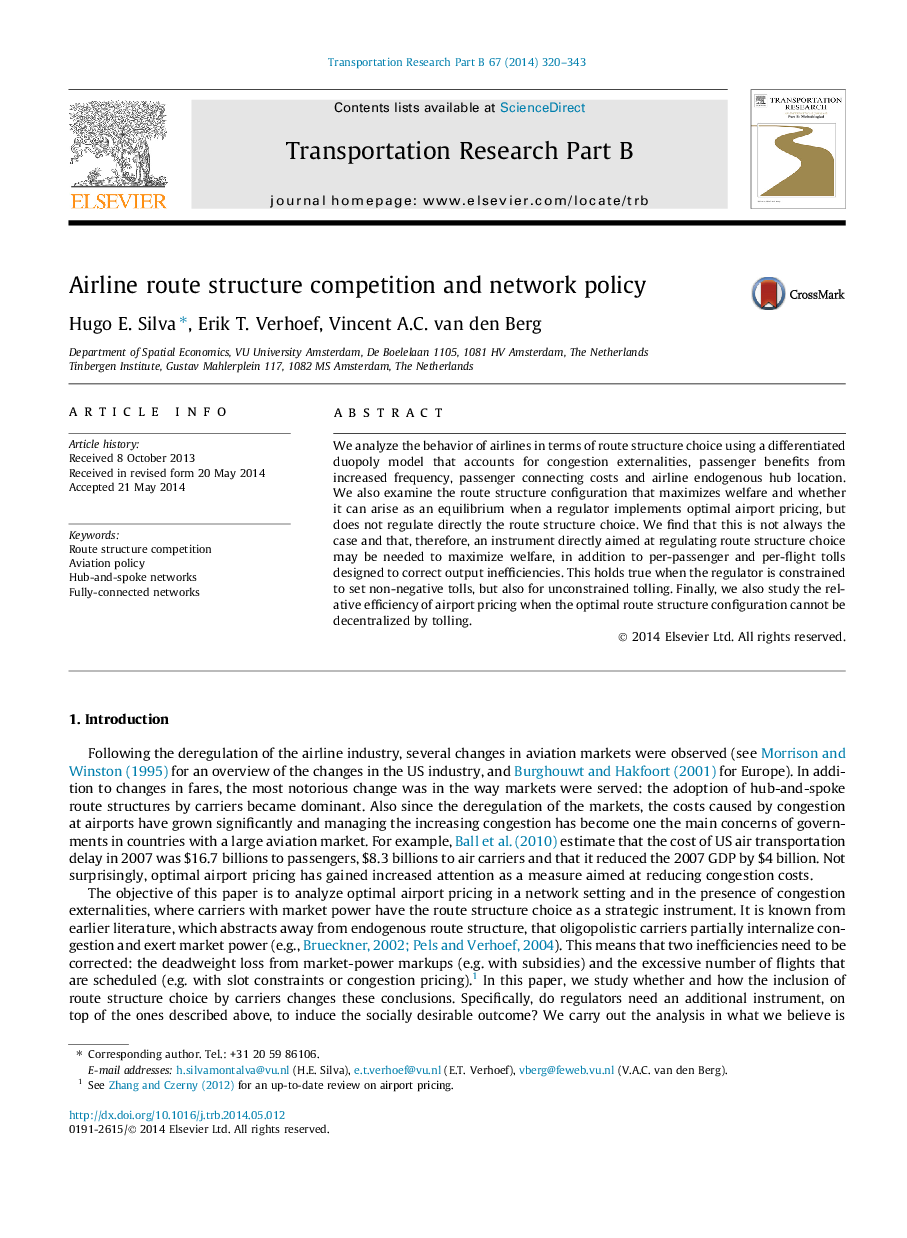| Article ID | Journal | Published Year | Pages | File Type |
|---|---|---|---|---|
| 1131863 | Transportation Research Part B: Methodological | 2014 | 24 Pages |
•We study route structure choice by airlines in a simple network.•We account for market power, congestion externalities, and endogenous hub location.•Tolls that correct the airline’s pricing cannot always decentralize the first-best.•A regulatory instrument aimed at correcting route structure choice may be needed.•The results above also hold when the regulator faces a budget constraint.
We analyze the behavior of airlines in terms of route structure choice using a differentiated duopoly model that accounts for congestion externalities, passenger benefits from increased frequency, passenger connecting costs and airline endogenous hub location. We also examine the route structure configuration that maximizes welfare and whether it can arise as an equilibrium when a regulator implements optimal airport pricing, but does not regulate directly the route structure choice. We find that this is not always the case and that, therefore, an instrument directly aimed at regulating route structure choice may be needed to maximize welfare, in addition to per-passenger and per-flight tolls designed to correct output inefficiencies. This holds true when the regulator is constrained to set non-negative tolls, but also for unconstrained tolling. Finally, we also study the relative efficiency of airport pricing when the optimal route structure configuration cannot be decentralized by tolling.
